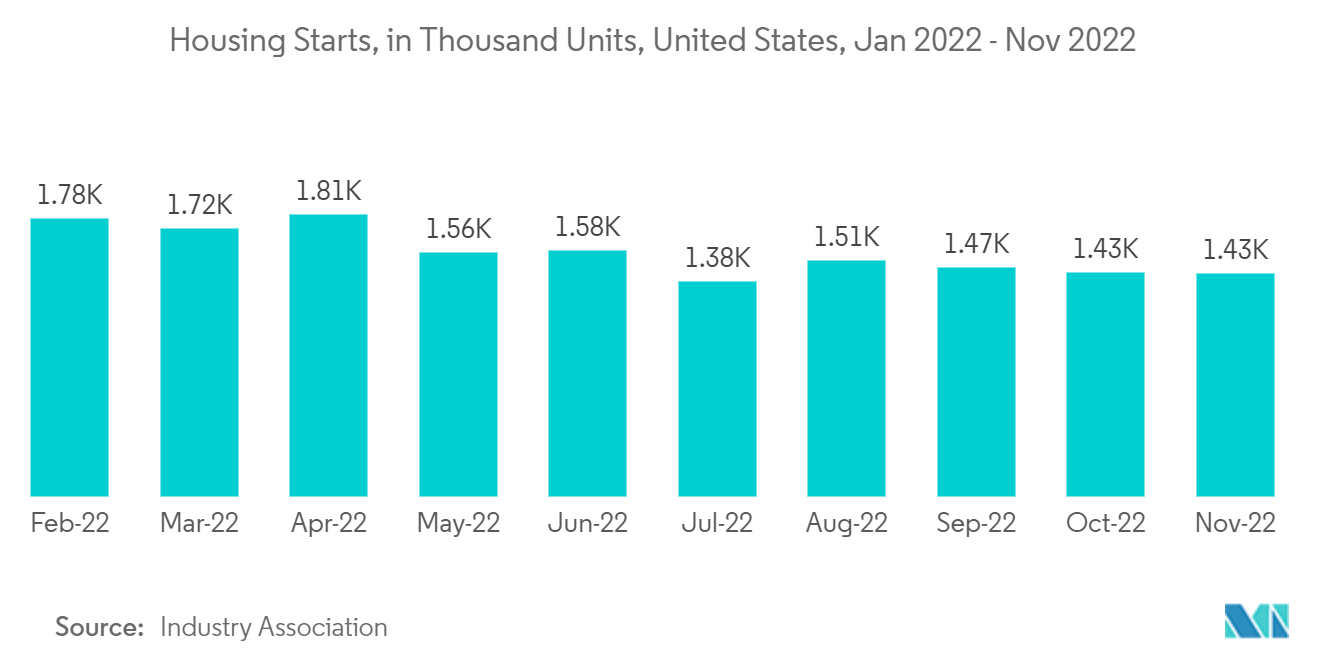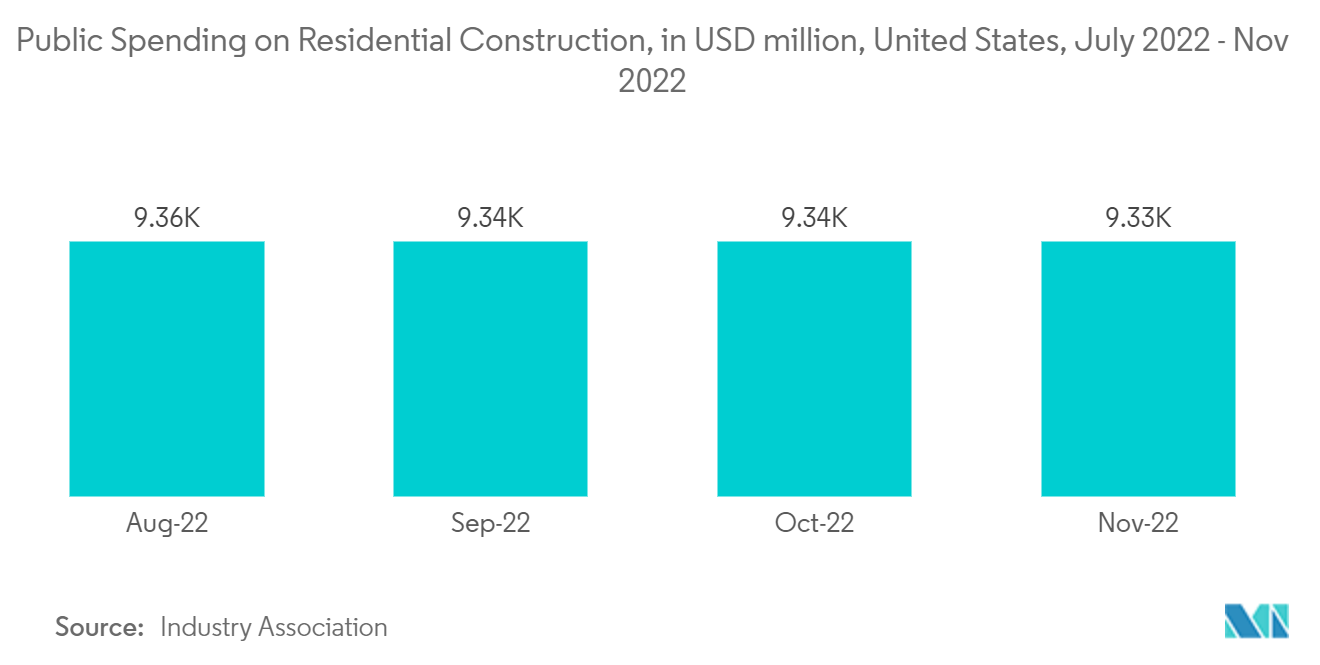Market Trends of US Residential Construction Industry
This section covers the major market trends shaping the US Residential Construction Market according to our research experts:
High-interest Rates are Negatively Impacting the Market
The United States homebuilders were a major beneficiary of the Covid economy. Record low-interest rates, combined with surging demand from consumers looking for more living space, caused a run on housing unlike most had ever seen before. Home prices surged over 40% in just two years, and homebuilders couldn't meet the orders fast enough. They even slowed sales just to keep pace. However, this growth declined at the end of 2022. Housing starts for single-family homes dropped nearly 19% year over year in September 2022, according to the U.S. Census. Building permits, which are an indicator of future construction, fell 17%. PulteGroup, one of the nation's largest homebuilders, reported its cancelation rate jumped from 15% in the second quarter of this year to 24% in the third. In Q2 2022, single-family housing starts were still up 10% year over year. That was just before mortgage rates really started to jump quickly. To go from a 10% annual gain in construction to a 19% drop in that time frame is a historically sharp turn. While sales of newly built homes are falling, prices are still higher compared with a year ago. Much of that has to do with still-inflated prices for labor and materials. Part of the price strength may just be indicative of which homes are selling, namely the more expensive ones. But that may change soon, as well.
Sales of newly built homes dropped below pre-pandemic levels in September 2022, and cancelations are now double what they were a year ago, according to the National Association of Home Builders. Construction on new United States homes fell a seasonally adjusted 0.5% in November to 1.43 million. The drop in construction on homes follows the decline in October 2022 when housing starts also fell by 2.1%. The annual rate of total housing starts fell from 16.4% in 2021. Building permits for new homes fell 11.2% to 1.34 million in November 2022. Permits for single-family homes fell 7.1% in November 2022, while permits in buildings with at least five units plunged by 17.9%. A big reason for this is mortgage rates that are still elevated, keeping buyer demand low and builders gloomy. Rates have surpassed the 7% mark and builders have been offering incentives to lure buyers, but home buyers are barely returning to the market. Homebuilders say 2023 is going to bring an even sharper downturn in the market, as high-interest rates scare away buyers.

Affordable Housing Support to Drive the Market Growth
The President of the United States signed into law of USD 1.7 trillion yearlong federal government spending package in December 2022, after the House and Senate passed it. The final spending bill provides funding increases to many programs compared to FY22, including significant funding for NLIHC's top priorities. Enough funding is provided to renew all existing contracts provided through Housing Choice Vouchers (USD 30.3 billion) and Project-Based Rental Assistance (USD 14.9 billion), and the bill expands rental assistance vouchers to an additional 12,000 households targeted to individuals and families experiencing or at risk of homelessness. Other programs also received an increase in funding, including Homeless Assistance Grants (USD 3.6 billion), Public Housing Operating Funds (USD 5.1 billion), Native American housing block grants (USD 787 million), Housing for Persons with AIDS (USD 499 million), Section 202 Housing for the Elderly (USD 1.08 billion), Section 811 Housing for People with Disabilities (USD 360 million), and fair housing programs (USD 86 million).
Overall, the final spending bill provides HUD programs with USD 61.8 billion, or USD 8.1 billion more than FY22-enacted levels. The legislation provides USD 3.6 billion for homeless assistance grants, a 13% increase. It will serve more than 1 million people experiencing homelessness. The package also funnels nearly USD 6.4 billion to the Community Development Block Grant formula program and related local economic and community development projects that benefit low- and moderate-income areas and people, an increase of almost USD 1.6 billion. Plus, it provides USD 1.5 billion for the HOME Investment Partnerships Program, which will lead to the construction of nearly 10,000 new rental and homebuyer units and maintain the record investment from the last fiscal year. Thus, by helping provide affordable housing, the legislation will drive growth in the residential construction sector in the United States.


